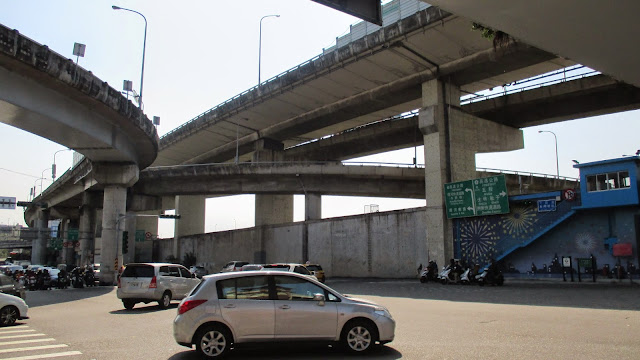Make voyages.
Attempt them.
There's nothing else.
— Tennessee Williams
Attempt them.
There's nothing else.
— Tennessee Williams
First of all, a big thank you to my parents. I’m sure it was a pain in the ass to drag us around the world in 1973-74, but those experiences enriched my life beyond measure and led me as a grown-up to places like this. I love you; will you pick me up at the airport? Blogwise, my visit to this ludicrously welcoming city started here, and it ends with this entry. 1. I spent three and a half months studying Mandarin for 30 minutes daily. Was it worth it? Well, doing six push-ups a day won’t qualify you for the UFC, but it’s still better than nothing. So yes, it was worth it — just not as much as I thought it would be. But my Chinese got a lot better in just two weeks. Our skulls are stuffed with Swiffer pads, and atomized bits of language stick, whether we realize it or not. Chinese is all about rising and falling tones. The word “ma,” for instance, means like eight different things, depending on the inflection. With exposure, these tonalities come more naturally. Plus, you think about the language more. “What if she asks me this? How will I respond?” and so forth. 2. Bicycles are banned from the parks. While this may have saved Bono, it is not good news for cyclists wishing to smell the pear blossoms. Would a speed limit possibly work? Maybe not. I assume this debate has been held and that I’m late to the party. Gambling is also banned in the parks but is widespread, so I suggest cautiously taking your chances. My sense is that police are loath to stop foreigners because they literally don’t know what to say to them. I did get scolded for drinking out of a water bottle on a subway platform, however.
3. Taiwan shares America’s hypersensitivity on race/gender/sexual orientation issues. If a politician or entertainer misspeaks or makes a joke regarding any of those arenas (or a foreigner likens a well-meaning young man to Hitler on a public blog), demands arise for them to be removed from the human tribe. I dislike this, but there’s a positive side: The Republic of China is on Asia’s cutting edge when it comes to LGBT friendliness, accommodations for the disabled and the harnessing of older women in the workplace. Even on a two-week visit, enlightenment on these fronts was abundantly evident. So, go Taiwan! But guard free speech while you’re at it. 4. By law, there’s a charge for plastic bags. But think about it. Three cents, three times a day, say, brings your 14-day total to a whopping $1.26 USD. Think of the sacrifices you’ll have to make! But a grocery tote has its uses. You can fit a ton of gift/food items in it and fit it under your seat on the return flight.
5. Mosquito tennis racquets are a thing. My apartment came with one, and waiters carry them to deliver medium-voltage shocks to all sorts of flying bugs. But I saw only one mosquito when I visited in March. 6. You cannot walk more than 50 meters without encountering a convenience store. This is great because when you head out in the morning, there’s no need to bring water, snacks, other various sundries. Just wake up and go. 7. You cannot walk more than 50 meters without encountering a bathroom. All MRT stations have them, obviously, but so do bars, restaurants and 7-11s. I have never had to ask for a key or been required to buy anything. In older parts of town there are quite a few squat toilets. Women get the short end of this deal, as with most things in life.
8. Paper napkins aren’t in wide use, so you may wish to carry a few. Some restaurants have tissue dispensers on the wall, sometimes by the front door. If you have to wipe your nose at the table, a discreet dab is OK. A bit of paper can come in handy if a store bathroom doesn’t have TP, which is rare but can happen. 9. I was wrong about staring. People do fix their gaze on Westerners but quickly look away when they think you’ve noticed. Small children can’t take their eyes off you. They are transfixed. Speaking of staring, a lot of Taipei girls turn off their phones so they can check themselves out in the touchscreen’s reflection. A universal calling, no doubt, but I only just noticed it here.
10. This is as much an observation about myself as it is Taipei. I have never felt the need to add a coda like this before. This city has forced me to wipe my Vacation Opinion Hard Drive and start over. Friendly, cheap and convenient, Taipei occupies a sweet spot for budget-conscious independent travelers that Seoul and Tokyo cannot. When I read cocksure netizens insist HK, just 500 miles away, is a preferred destination because English is more widely spoken, I take them at their word. But I think their priorities are messed up.
When I arrived in Ximending at 9:10 p.m. on a Tuesday, it was as if a magical cabinet opened in the sky. Two weeks later, nothing has diminished Taipei's appeal. The rain has ceased; the lace curtains thrown open. The cows have come home to roost. The conductor’s baton hangs at his side. My coin settles on the fountain floor. I have found my city.
End





















































